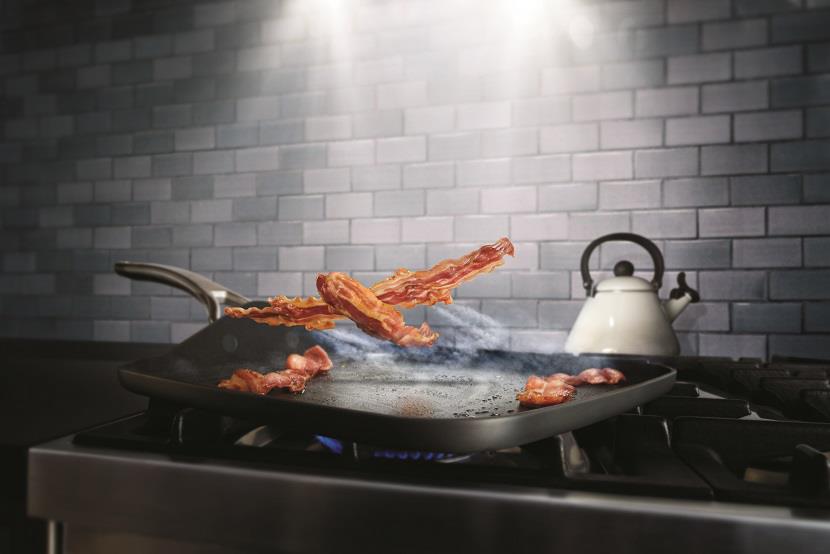Easy Use and Care
What’s the best way to clean my pan without damaging it?
Use hot, soapy water with a sponge or dishcloth. Oil and food residue left on pans can gradually harden. If your pans have “carbonized”—and you see a thin film of oil baked into the pan‚ you’ll need to apply a little more elbow grease to remove it; future cleanings will be easier.
Can I use an abrasive cleaner or scouring pad?
Teflon™ nonstick coatings eliminate the need for abrasive cleaners. If you’ve got extra-sticky or baked-on residue to remove, use a nonabrasive cleaner like Bon Ami™ or a soft scrub cleanser. Sponges, a Scrunge™, or other cleaning pads labeled "Safe for Nonstick Products" work well, too.
How can I take care of my cookware so that Teflon™ nonstick coatings perform over its lifetime?
Teflon™ nonstick coatings are more durable than ever. Most metal utensils are safe for use on today's Teflon™ coatings. Use plastic, nylon, and wooden utensils to avoid marring.
Never use knives to cut food in the pans, and always wash with hot, soapy water after each use. Store carefully to prevent scratching—hanging pot racks are a great storage option.
Are Teflon™ nonstick coatings safe for use in the microwave or refrigerator?
Although nonstick coatings are safe for the microwave, cookware and bakeware with a metal base material may not be suitable for the microwave. Check the cookware manufacturer’s guidelines for proper use.
Teflon™ nonstick coatings can be stored in the refrigerator.
Easy Cooking Tips
Do Teflon™ nonstick coatings withstand high temperatures?
Teflon™ nonstick coatings can withstand temperatures up to 260 °C (500 °F)—well above typical baking, roasting, and frying temperatures. Low to medium cook temperatures, however, often yield the best results. For more details, see Cooking Temperature Information.
Can I really cook without oil or butter? Even when I bake?
Unless you’re adding fats for flavor, you don’t need them for food release, because Teflon™ nonstick coatings prevent food from sticking. Lightly greasing a pan is recommended when baking, if the recipe calls for it.
Can I brown food using cookware treated with Teflon™ nonstick coatings?
Yes. Browning food in nonstick pans imparts a richer color and flavor that coats the meat instead of sticking to the pan. Find out more about browning and deglazing here.
More About Teflon™ Nonstick Coatings
If nothing sticks to Teflon™, then how does Teflon™ stick to the pan?
Nonstick coatings are layered onto cookware and bakeware. The first layer—or primer—adheres it to the pan’s metal surface. A midcoat follows to provide resistance against scratches and abrasions. The final topcoat gives cookware and bakeware that nonstick surface for easy food release and cleanup.
What makes Teflon™ nonstick coatings better than the alternatives?
Chemours holds the majority of patents granted in nonstick technology. We’re the leader in research and development, quality assurance, and nonstick performance.
Browning Meat
Brown meat easily in a pan with Teflon™ coating without adding any fats—unless you want to. Learn more.




